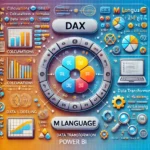In the ever-evolving landscape of project management tools, finding the right platform to meet your team’s needs can be a challenging task. Jira and Redmine are two popular project management solutions that have gained significant popularity among teams across various industries. While both tools aim to streamline project workflows and improve collaboration, they have unique features that set them apart. In this blog post, we will delve into the strengths and differences between Jira vs. Redmine, helping you make an informed decision based on your team’s specific requirements.
Jira: Agile Excellence and Advanced Issue Tracking
Developed by Atlassian, Jira is widely regarded as one of the best project management tools for agile teams. It is specifically designed to support agile methodologies like Scrum and Kanban, making it a popular choice among software development teams. Key features of Jira include:
- Agile Project Management: Jira provides a range of agile frameworks and customizable boards that allow teams to efficiently plan, track, and manage projects. It enables seamless collaboration and encourages cross-functional team communication.
- Issue and Bug Tracking: Jira’s robust issue tracking system allows teams to create, prioritize, and resolve tasks and bugs promptly. Its comprehensive reporting capabilities provide valuable insights into project progress and performance.
- Customizable Workflows: Jira offers the flexibility to create custom workflows tailored to your team’s specific development processes, ensuring efficient project execution.
- Integration: Jira seamlessly integrates with an extensive ecosystem of third-party tools, enhancing its capabilities and making it adaptable to your team’s unique workflow.
https://synapsefabric.com/2023/07/24/jira-vs-clickup-a-comprehensive-comparison-of-project-management-titans/
Redmine: Flexible Open-Source Solution
Redmine, an open-source project management tool, stands out as a flexible and cost-effective solution. While it may not have the same level of agile-focused features as Jira, it offers a robust set of functionalities suitable for various project management needs. Key features of Redmine include:
- Customization: Redmine allows users to customize the tool to meet their specific requirements, making it an adaptable choice for different project types.
- Issue Tracking and Management: Similar to Jira, Redmine provides issue tracking and management capabilities, helping teams stay on top of tasks, bugs, and project progress.
- Time Tracking: Redmine includes built-in time tracking features, enabling teams to monitor the time spent on tasks and projects for improved efficiency.
- Wiki and Documentation: Redmine offers a built-in wiki feature that facilitates team collaboration and documentation, promoting knowledge sharing within the organization.
- Cost-Effective: As an open-source tool, Redmine is a cost-effective choice for teams on a tight budget, as it eliminates licensing fees.
Choosing the Right Tool
When deciding between Jira and Redmine, consider the following factors:
- Agile Development: If your team follows agile methodologies and requires advanced issue tracking and agile-specific features, Jira is the optimal choice.
- Customization: If your team values flexibility and customization, Redmine allows you to tailor the tool to your specific needs.
- Integration: For teams that rely heavily on third-party tools and seek extensive integration capabilities, Jira’s ecosystem of plugins and add-ons makes it a compelling option.
- Cost-Effectiveness: If budget constraints are a primary concern, Redmine’s open-source nature may be more appealing.
https://synapsefabric.com/2023/07/24/bugzilla-vs-github-which-is-the-best-for-issue-tracking-and-project-management/
In conclusion, both Jira and Redmine are robust project management tools with unique strengths. Jira excels in supporting agile methodologies, offering advanced issue tracking, and seamless integration. On the other hand, Redmine stands out as a flexible and cost-effective open-source solution, suitable for various project management needs.
Ultimately, the choice between Jira and Redmine depends on your team’s specific requirements, preferred workflow, and budget considerations. By carefully evaluating the features and benefits of each tool, you can select the one that aligns best with your team’s goals, enhances collaboration, and ensures successful project delivery.






